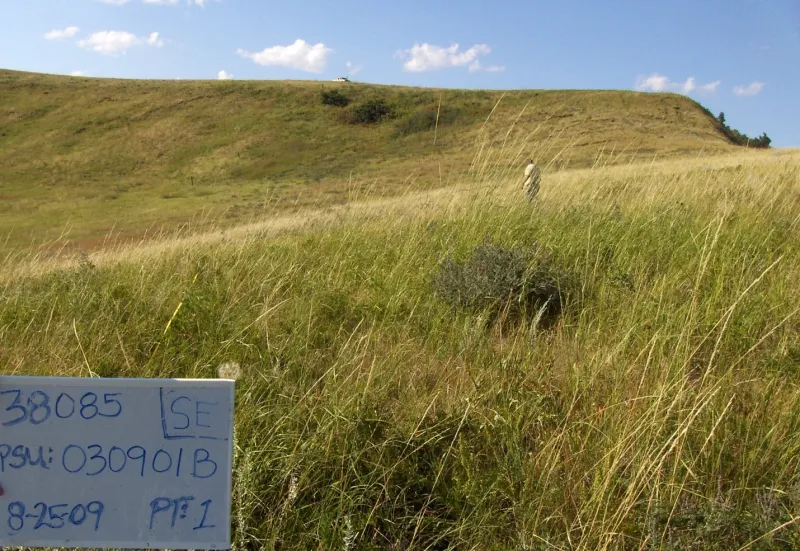The plant communities occupying an ecological site are dynamic and highly variable. Their composition changes in response to weather patterns and management inputs. Historically (prior to European occupation), weather, precipitation, fire and grazing by free-roaming herbivores were the primary disturbances that shaped the composition of the plant communities. For example, prolonged periods of drought would have shifted the plant communities to shorter- statured, more drought-tolerant species of grasses and forbs.
Ecological site descriptions attempt to describe the composition and function of these “historic” plant communities in what is termed the “Reference State.” One of the plant communities that would have occurred within the reference state is termed the “Reference Plant
Community.”
The reference plant community describes the plant community that would have occupied the site under the average historic disturbance regime. This is the plant community that would have had the highest ecological function in terms of hydrology, species diversity and nutrient cycling.
The composition of the reference plant community is described based upon species composition data collected from sites that were determined to best represent this historic condition. Additional information is gathered from other reference sources that describe the plant communities occupying the region prior to settlement when the natural disturbance regime would have occurred.
Since settlement, the natural disturbance regime has been altered. Fire, as a primary disturbance, essentially has been eliminated from the ecosystem. Grazing disturbances have been altered from intensive and infrequent to intensive and frequent. In other cases, fire and grazing have been eliminated entirely.
Additionally, exotic plant species (non-native) such as Kentucky bluegrass, smooth bromegrass, crested wheatgrass and sweet clover have invaded sites. Depending upon the degree of invasion, species diversity, hydrology and nutrient cycling may be altered significantly. Invasion by these species is occurring regardless of management, especially during a wet cycle period (for example, Kentucky bluegrass encroachment throughout much of the northern Plains during the wet cycle starting in 1993).
However, management intensity may limit their spread and prevent the plant community from crossing an ecological threshold. Once a threshold is crossed, major management changes and dollar investments are required for restoration. In some cases, restoration may not be ecologically or financially possible.
Complete versions of ecological site and forage suitability group descriptions are available on the web at https://edit.jornada.nmsu.edu/catalogs/esd.
If the ecological site descriptions for your area of interest are not available on this website, contact your local Natural Resources Conservation Service county office.
Ecological site maps for your area of interest are available via Web Soil Survey https://efotg.sc.egov.usda.gov/#/details.















































